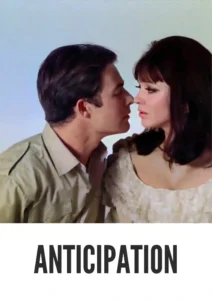Video Sources 0 Views

Synopsis

Embark on a captivating journey through the ages with The Oldest Profession, a 1967 anthology film, now beautifully colorized to enhance its timeless appeal. Directed by six acclaimed directors and featuring an international cast, including Jeanne Moreau and Raquel Welch, this film presents six distinct vignettes exploring the theme of prostitution in various eras and cultures. Perfect for classic film enthusiasts and those interested in thought-provoking storytelling, this HD download offers a visually rich and intellectually stimulating experience.
The Oldest Profession weaves together six separate stories, each offering a unique perspective on the world’s oldest profession.
-
: Explores the earliest forms of exchange and desire.
-
: Depicts the opulent and decadent world of ancient Rome.
-
: Captures the tumultuous atmosphere of revolutionary France.
-
: Showcases the romanticism and intrigue of the Napoleonic period.
-
: Evokes the bohemian spirit of the Jazz Age.
-
: Offers a contemporary look at love and relationships.
Each segment is a self-contained narrative, brought to life by a different director and cast, creating a diverse and engaging viewing experience. The film delves into the complexities of human relationships, societal norms, and the ever-evolving nature of love and desire.
The film boasts an impressive international cast, with each segment featuring unique talents:
-
Jeanne Moreau
-
Raquel Welch
-
Elsa Martinelli
-
France Anglade
-
Anna Karina
-
Bernardo Blier
-
Jean-Claude Brialy
The Oldest Profession falls into the genre of anthology drama, with elements of comedy and social commentary. Its episodic structure and diverse storytelling make it a captivating and thought-provoking film.
Released in 1967, The Oldest Profession reflects the trend of anthology films that gained popularity during the 1960s. These films brought together multiple directors and casts to explore a central theme through various perspectives. The Oldest Profession stands as a notable example of this genre, offering a unique and insightful look at the complexities of human relationships and societal norms.
This colorized version of The Oldest Profession has been meticulously restored using advanced digital techniques, enhancing the visual appeal while preserving the film’s original charm and artistic integrity. The colorization process involved a detailed analysis of the grayscale tones in the original black and white footage, with careful attention paid to assigning appropriate colors to each scene. While the specific software used remains confidential, the methods employed included advanced algorithms for color palette selection, motion compensation, and image enhancement. This painstaking process breathes new life into the characters and settings, making the story even more engaging for modern audiences. While the decision to colorize classic films is sometimes debated, it introduces these films to a wider audience, ensuring their lasting appeal for generations to come.
-
: Mauro Bolognini, Philippe de Broca, Jean-Luc Godard, Franco Indovina, Michael Pfleghar, Claude Autant-Lara
-
: Various
-
: Various
-
: Various
-
: Various
-
: Various
-
: 118 minutes
-
: MP4
-
: HD (1080p)
-
: Compatible with most devices, including smartphones, tablets, computers, and smart TVs.
The Oldest Profession (1967) has been praised for its diverse storytelling, its impressive international cast, and its thought-provoking exploration of human relationships. It remains a notable example of the anthology film genre, celebrated for its unique perspectives and its artistic merit. As a relatively obscure but endlessly fascinating film, The Oldest Profession offers a delightful glimpse into the golden age of international cinema.
-
: What is The Oldest Profession about?
-
A: The Oldest Profession is an anthology film that presents six separate stories, each exploring the theme of prostitution in various eras and cultures.
-
-
: Is The Oldest Profession (1967) a well-known film?
-
A: While not as widely known as some other classics, The Oldest Profession has gained recognition for its unique storytelling and its impressive cast.
-
-
: Is this version of The Oldest Profession colorized?
-
A: Yes, this version has been professionally colorized to enhance the viewing experience.
-
-
: What makes The Oldest Profession interesting for classic film fans?
-
A: The Oldest Profession offers a diverse and thought-provoking look at human relationships and societal norms, showcasing the talents of an international cast and multiple acclaimed directors.
-
-
: What is the download format?
-
A: The download format is MP4, which is compatible with most devices.
-
-
: What resolution is the download?
-
A: The resolution is HD (1080p), providing a high-quality viewing experience.
-
Watch The Oldest Profession Today!












